Eric shot me a look of quiet desperation, “Why are we putting ourselves through this?”
It was a fair question.
The roads crisscrossing the Cordillera, as the Philippines’ Central Highlands are known, are notoriously steep. And rough.
20% grades are not unheard of. Even on paved surfaces, my front wheel often popped up and bucked me off the bike. Then I’d have to dig in my heals and push.
Even the Koga’s lowest gear was no match for the Cordillera climbs. Our Schwalbe Mondial tires, no match for the mud.
Rain had been following us for the past 8 days. Along the tropical northern coast of Luzon, the showers were refreshing. Here in the Highlands, they were simply chilling.
I was, admittedly, miserable at the moment Eric posed the question.
Why were we putting ourselves through this?
The road had degenerated into a slick river of mud. On the steep surface, we were slipping and sliding all over the place. On one occasion, I literally had to fling my bike down to avoid skidding backward into a ravine.
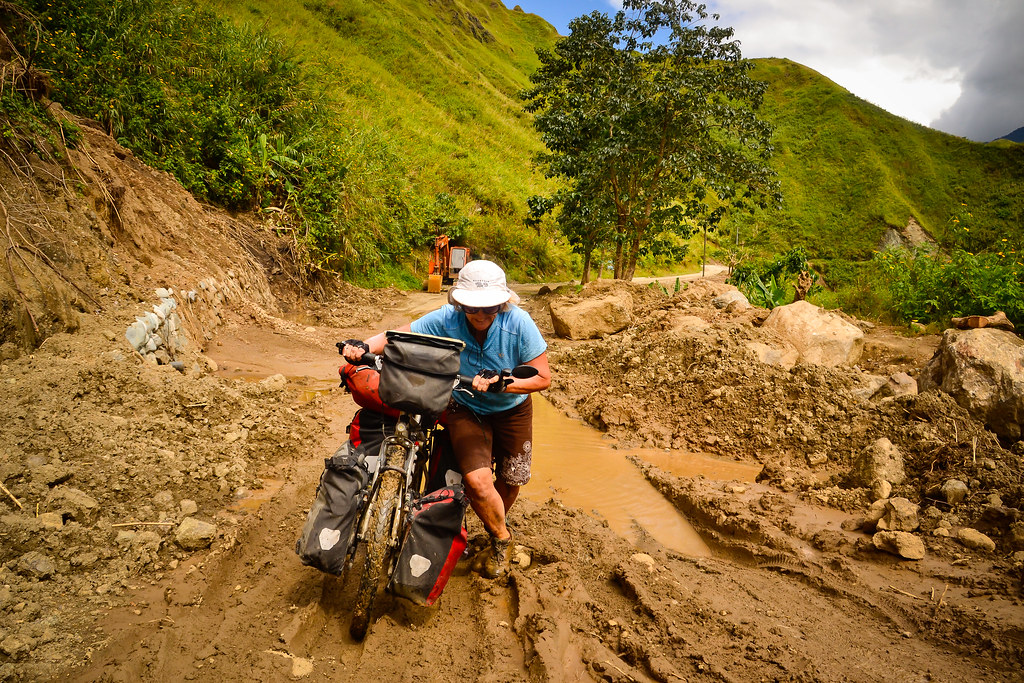
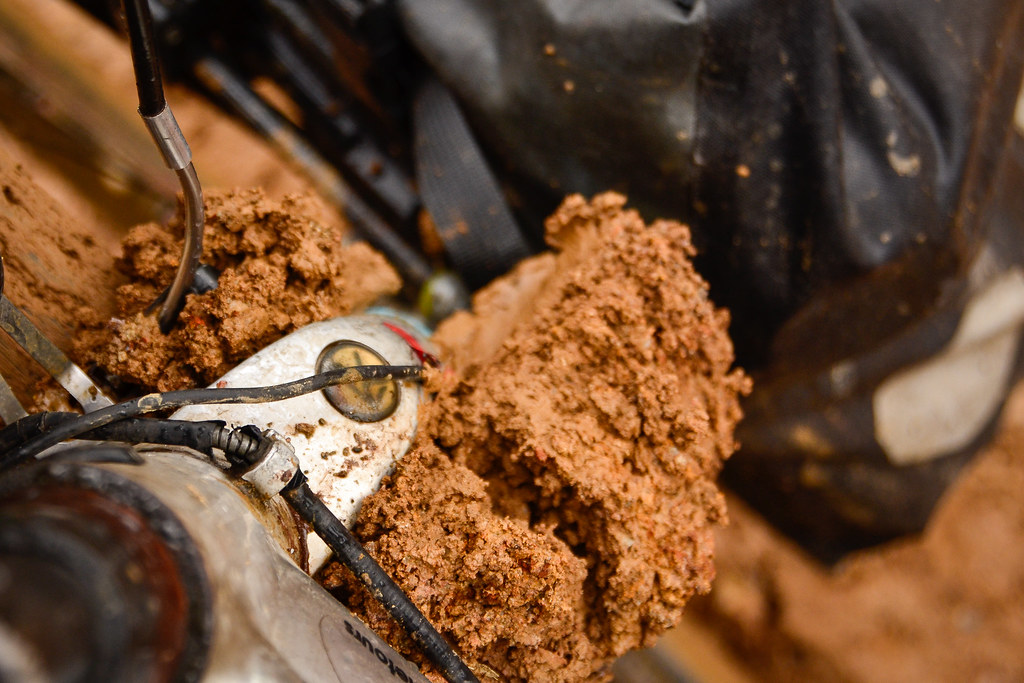
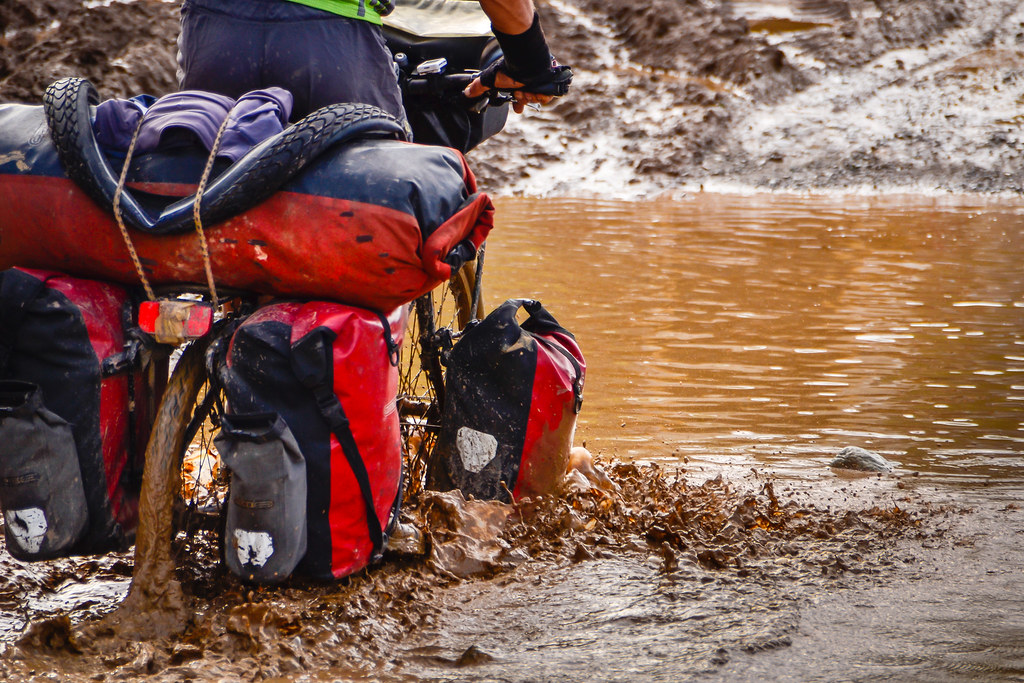
To top things off, a town fiesta was in full swing in Kabayan, the mountain town we were attempting to reach. Truckloads of revelers were squeezing by on the narrow ‘highway.’
In spite of the steady rain and being crammed like cattle into the beds of trucks designed to transport vegetables, the locals were all smiles.
Impossible not to admire their fortitude.
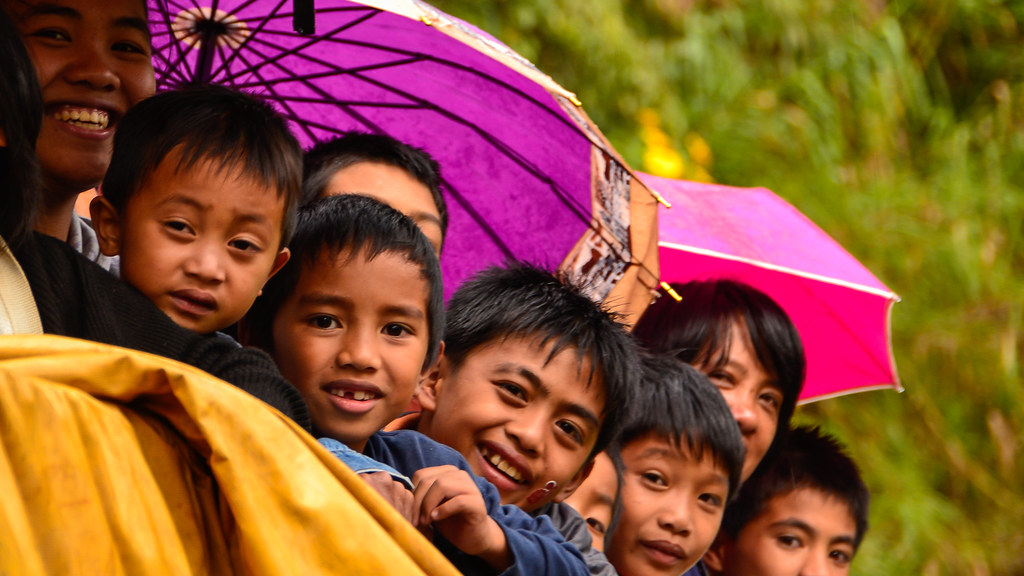
And to smile back.
For there was, indeed, much to smile about.
For starters, the Cordillera is honest-to-goodness, gob-smacking beautiful. This is a place of lush terraced rice paddies, and patchworks of neat garden plots. Here the roads cling precariously to steep mountainsides and dip and dive into narrow valleys.
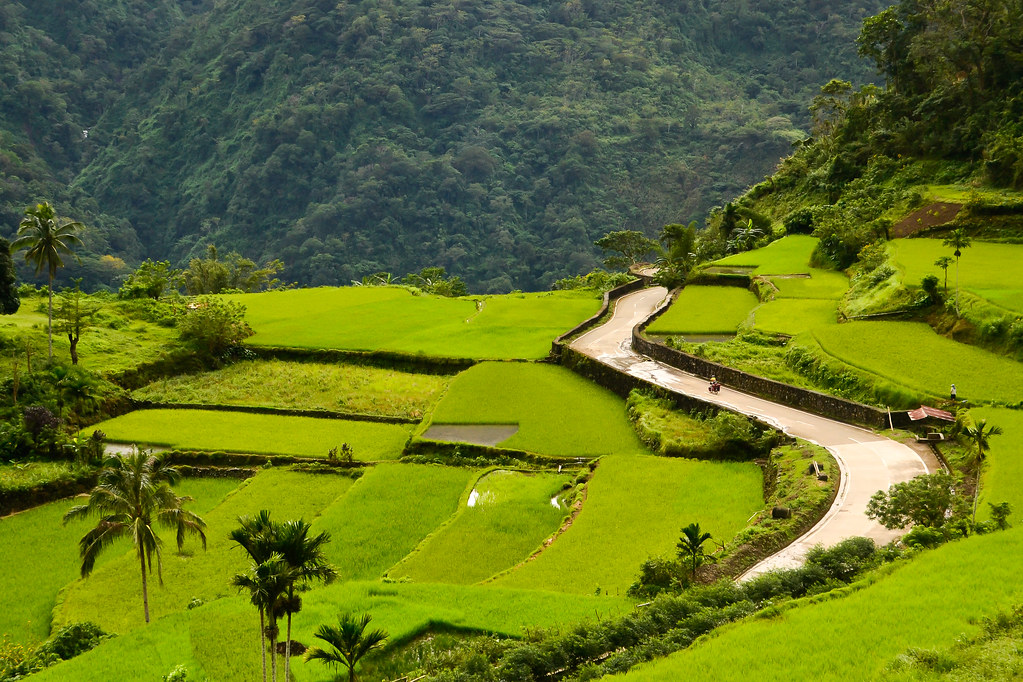
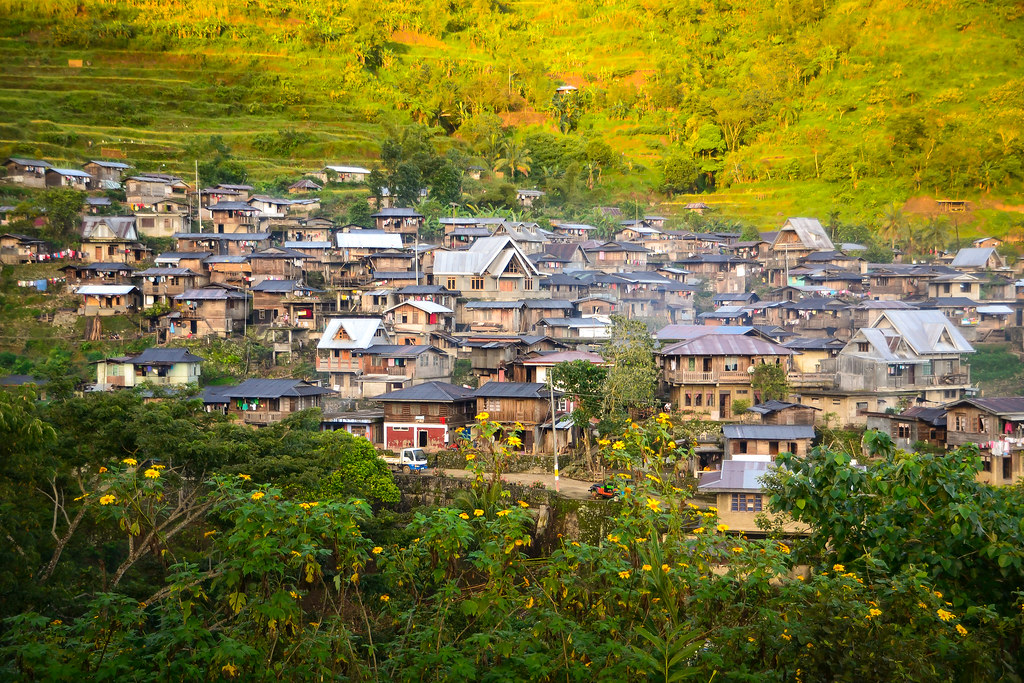
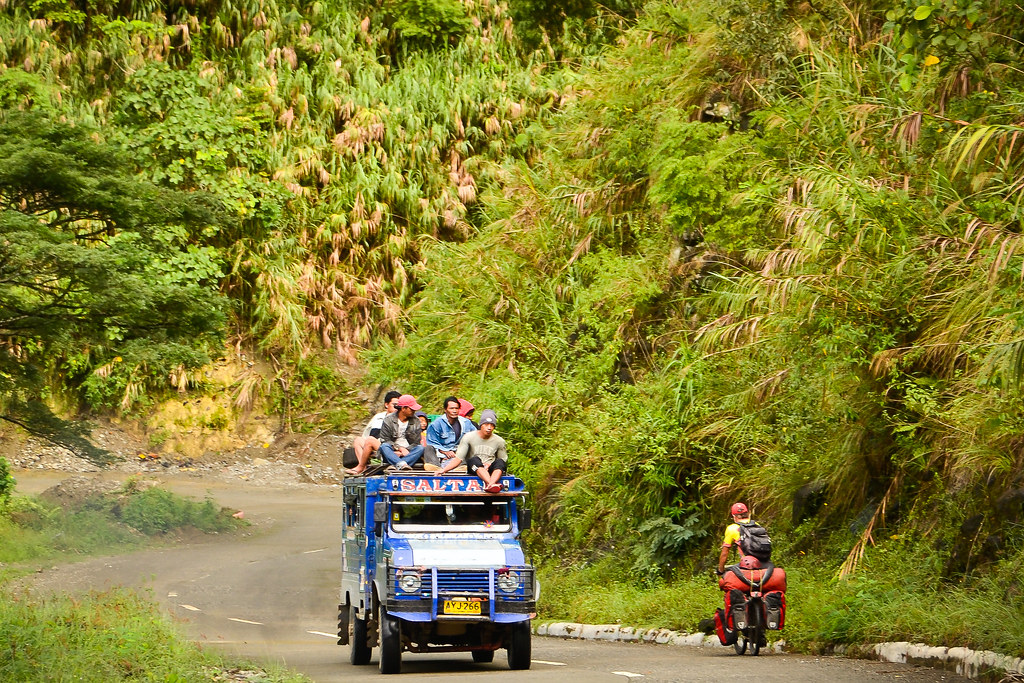
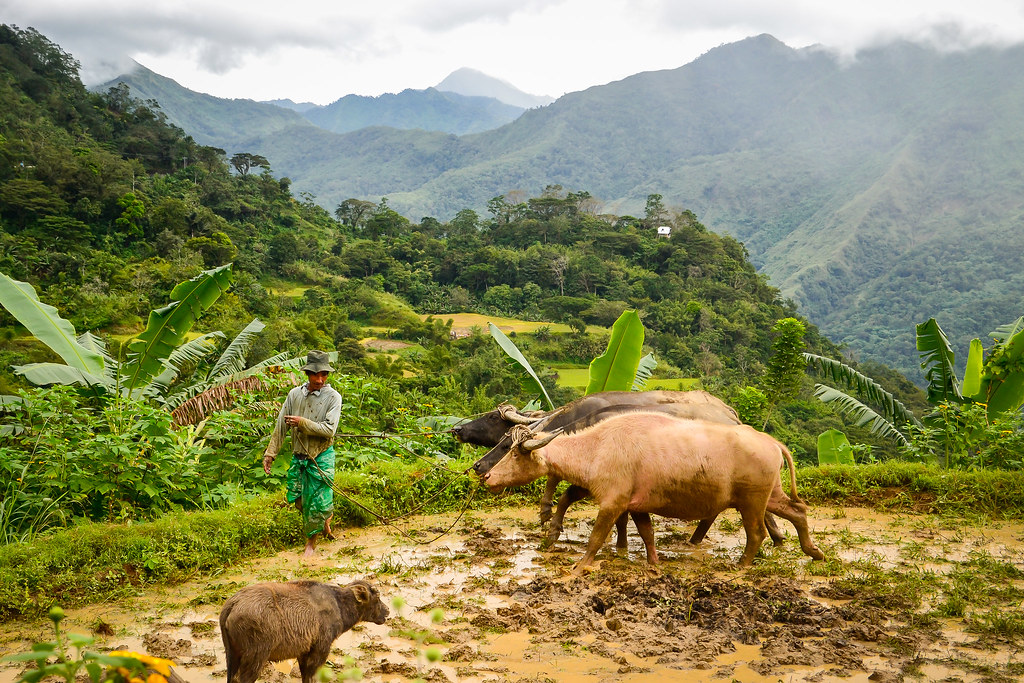
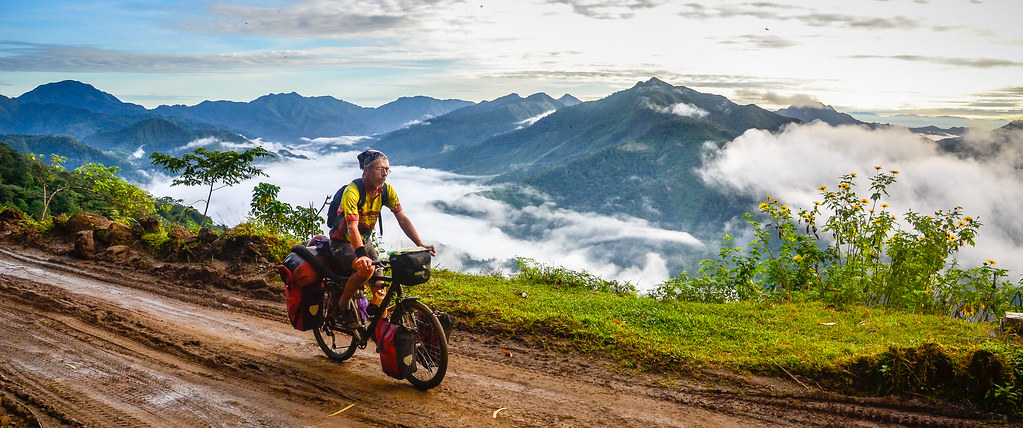
One day, as Eric repaired a puncture, an old man with weathered skin and kind eyes explained the origins of the road to me.
“It was the Americanos,” he began, “who built the road.”
“Before it was only a walking path. But the Americanos came with their Boum-Boum and built a road.”
Life got a lot better after that, he went on to explain. They could haul their vegetables to market. The women no longer had to give birth at home in a cold shack with sketchy sanitation, only their mother-in-law or a neighbor standing by to assist. Children could attend school.
Now the road was in the process of being widened and upgraded to concrete.
The Filipino road builders, the local man bemoaned, were not as quick and efficient as the Americans. They didn’t have Boum-Boum and the process of digging up mountain sides was time-consuming. Plus there was much time off for the many fiestas.
The Cordillera is home to proud tribal peoples whose lives are far removed for the hustle and bustle of coastal living. Many till the land using the same rudimentary methods of their forefathers. This is challenging terrain and from planting till harvest there is back-breaking work to be done.
The people of the Cordillera speak dozens of mutually indistinguishable languages. When residents of one tribe want to communicate with those from another tribe, English is often the language of choice.
Sadly, tribal wars continue to flare up from time to time. At the Catholic Church in Tabuk, a sobering memorial pays tribute to the scores of parishioners and four priests (including one Belgian missionary)who have lost their lives in the troubles.
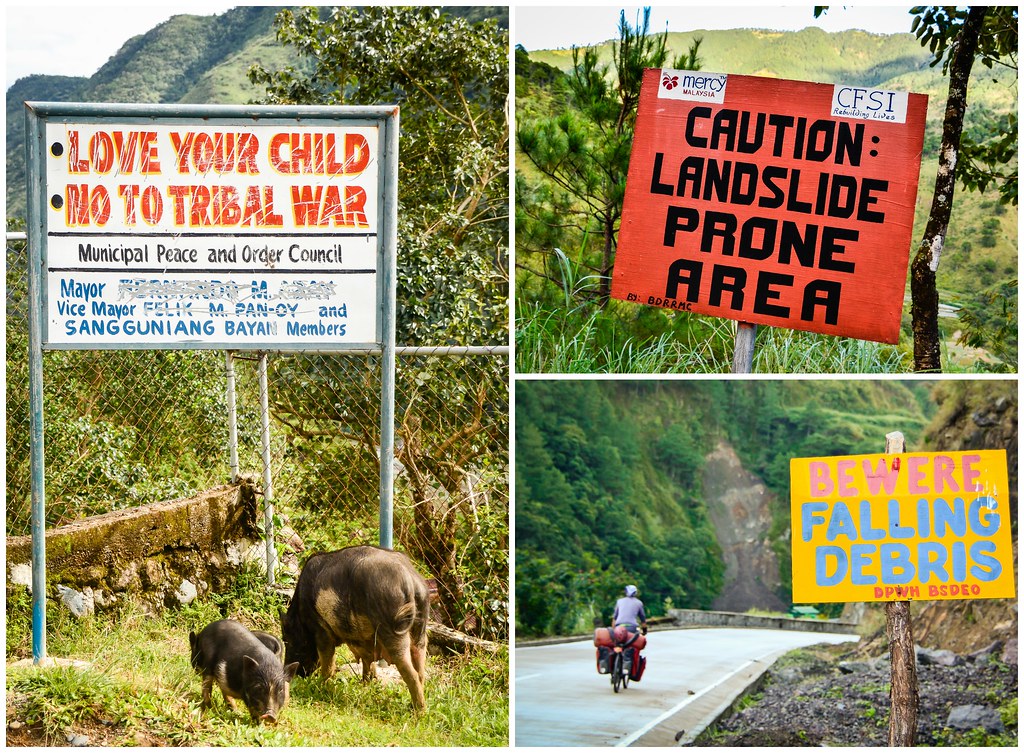
Our stay in Tabuk left me anxious and tense. We arrived in the dusty and disorganized settlement around 4 pm. I popped into the petrol station to use the restroom (called a comfort room in the Philippines) and was immediately accosted by a trio of three women when I exited the facilities.
The boldest spoke in a low, concerned voice, “This place is not safe. You better get out of here.”
She was dead serious. I glanced around. Tabuk did not seem the friendliest or tidiest of towns. It had the feel of an edgy wild-west border town, but not dangerous. No, not a place one should flee from.
“What do you mean it’s dangerous?” I asked searchingly.
“There are hold-ups. You can’t be on the streets after sunset. And you… you stand out here. People know you’re a foreigner and they’ll think you’re rich. I tell you it’s dangerous. Bad things happen after dark.”
Eric scoffed at the scare mongering, but I was in no need of more convincing.
“I see. Where shall we go to be safe?”
“The Catholic church is just there. You will be out of harm.”
We high-tailed it to the Catholic Church. In front of the tall gates of the house of worship stood two armed security guards.
The priest was summoned and assured us things in Tabuk were relatively calm. The security guards were just a precaution.
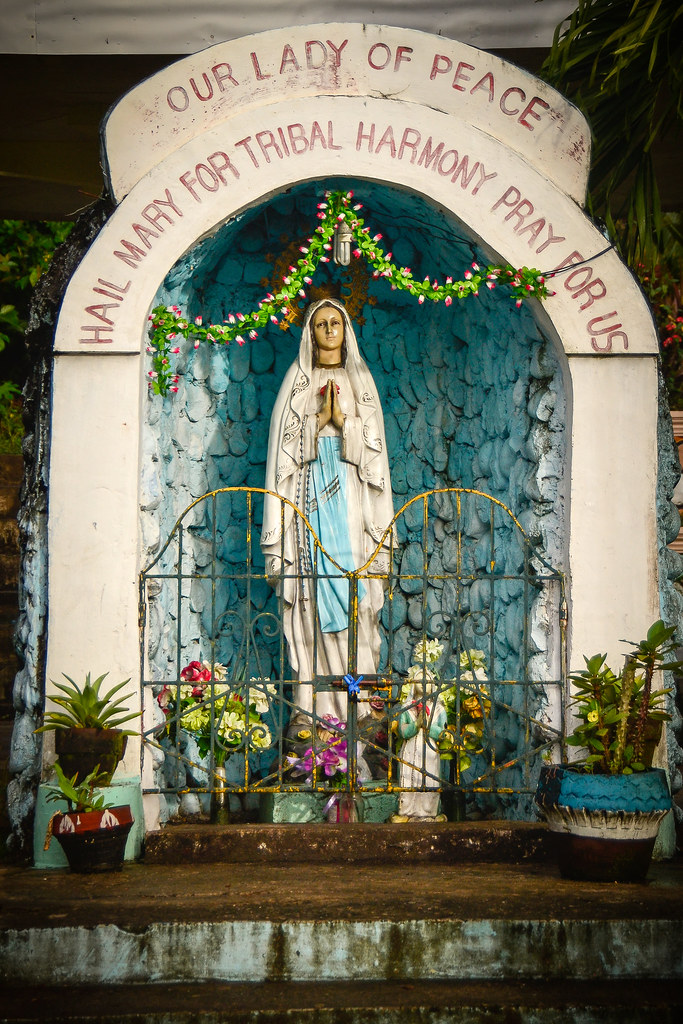
The following day we cycled high up into the mountains to a small town called Lubuagan. As we sat perched in front of the parochial school preparing lunch a tiny sweet-faced nun came to see what we were up to.
She, too, was concerned for our safety and insisted we spend the night in the nunnery. There was a feud, she explained, with the next village and travel after dark was ill-advised. Later we discovered that just six months back a man had been gunned down right in front of the statue of the Virgin Mary, not 50 meters from where we were seated.
Of course these are disputes between tribes. Tourists have little to fear and have never been targeted.
The stunning landscape did a fine job of distracting me from thoughts of the conflict. In any case, there was no point in fretting; we had to get on with the difficult job of conquering all those mountains.
As I suffered with the mud and muck on the road to Kabayan, I tossed around Eric’s question:
Why were we putting ourselves through this?
The scenery was certainly one reason. But perhaps not the most important.
Eventually, we would reach the top of the climb and I would be overcome with a burst of pride.
We’d done it!
6 months from now, I will hardly remember all those easy days cycling along the smooth coastal road.
But the day we conquered the last climb to Kabayan—that memory will stay with me for years to come.
Along with all that suffering, came a final dose of joy.
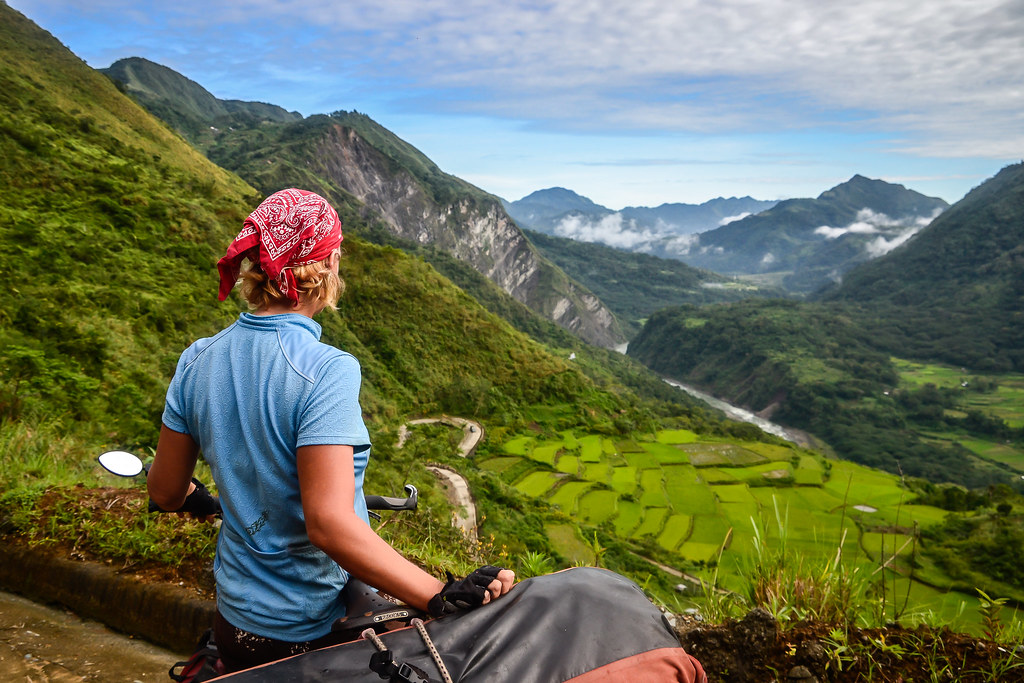
On the Road: 7 years, 6 months, 2 days!
Total Kilometers: 141,010
Countries: 96
Latest Location: Los Banos, Philippines heading south to Mindoro


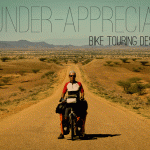
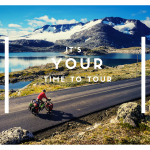
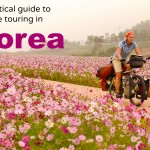
A Filipino cyclist just sent me the link to your web page. What an amazing trip. When I have more time I have to start reading you whole blog and see what has changed in the years. I have been in 78 countries so far by bike.
Tomorrow I am leaving for the Philippines and plan to start with North Luzon and also the mountains. I don’t want to carry a tent – not worth for just two months were there are also so many hostels. But it looks that there are not many hotels in the mountains. Where did you stay? What were the temperatures up in the mountains?
May be will see us on the road somewhere in the world
Bernhard
Hey Bernhard,
It can be cool up the mountains (maybe around 20 Celsius) and rainy. If you can’t find a hotel then just ask for the Barangay Captain (community leader) or go to one of the many local churches–you will be welcomed with open arms.
Northern Luzon is by far my favorite part of the Philippines–just be prepared for some incredibly steep climbs and rough roads.
Happy cycling!
Hi Eric and Amaya,
Just catching up on your latest adventures and jealously thinking about the long road out there. It’s an amazing thing that you guys are doing so hats off for your strength, vision and resolve. I hope one day to catch up with you again on the road somewhere. I have been in UK (Stratford-U-Avon) this year studying Shakespeare and am now studying literature at Oxford (yes, I know. Not very hardcore I’m afraid!).
Stay safe and best to both of you.
Buff3y